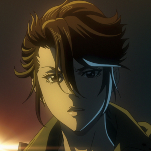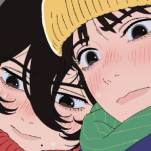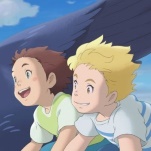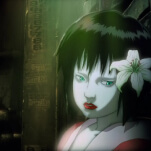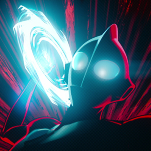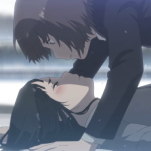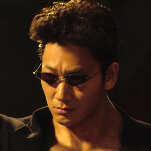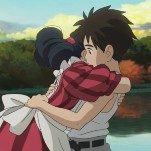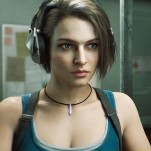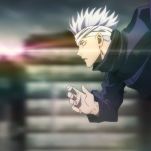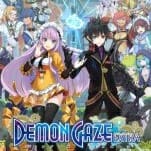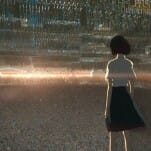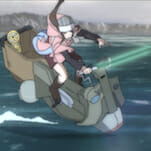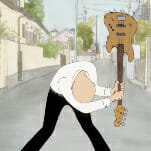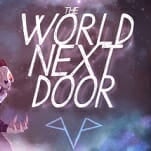Ghost in the Shell 2: Innocence Still Feels Like Unsurpassed Cyberpunk

Ghost in the Shell 2: Innocence is exactly the kind of film you’d expect from a movie that opens with nanomachine sperms inseminating the CPU cores of androids, and I don’t ever want to watch it again. The incredibly slow-burn, noirish follow-up to filmmaker Mamoru Oshii’s original adaptation of Masamune Shirow’s manga mulls over its themes more than any commentary or action really needs. But it’s also something you should watch at least once, because I’ll remember Innocence fondly when I’m getting annoyed at less inventive contemporary cyberpunk.
Whereas Ghost in the Shell was interested in the transhumanist potential of technology (and cyberpunk as a genre afterwards would be defined by the co-option of this liberatory potential by the state), Ghost in the Shell 2: Innocence is a humanist fable—one interested much more in what the desire for new bodies says about humans as they exist today. Released in 2004, it’s also a technological triumph in its own right, a stepping stone for feature animation into the digital age, bridging the gap between the likes of Oshii’s Patlabor: The Movie and the rebuilds of Evangelion with an extensive incorporation of CGI into the same style as the original film.
Production I.G’s CG is a mixed bag with some dazzling success in lighting. Most striking are waxy cars that capture the reflections of neon signs along all their curves. While some models of buildings and vehicles look like early CG, Oshii mostly incorporates the technology thoughtfully. The then-novel use of hand drawn characters atop 3D backgrounds is pulled off well, with the characters’ textures at times replicating the massive layouts of the original film that remain so enduring today.
The highlight is a now-iconic festival sequence set below the towering skyscrapers of Iturup, featuring massive ornamental puppets and huge, baroque floats on parade in the streets and canals of the island super-city. The familiar children’s choir of composer Kenji Kawai’s soundtrack accompanies the spectacle, inspired by the Taiwanese festival to the sea goddess Mazu. The sequence shows off the possibilities of CG, filling the screen with vibrant, intricately crafted models with better movement and compositing than we’d see from most CG animation over the next two decades. (It apparently took the studio two years of production to animate the scene.) It also highlights the architectural wonder and immense scale of layout artists Takashi Watabe and Atsushi Takeuchi, rivaling the quiet moments on the canals of the 1995 film’s New Port City.
But then…that script.
The technological feat is a muted experience in the timeline of the film. The cultural context of the event in the city and its relationship to the characters is lost in an increasingly solipsistic plot that veers away from mystery and into seminar. Oshii’s script falls apart to aphorisms and rejoinders, citing science fiction and philosophy and the Bible. (Descartes is name-dropped just 18 minutes in—which feels much earlier given the pacing.) When everyone stops reciting lines at one another and characters just talk to each other, the ideas come through well enough.
The perspective character, the hulking cyborg Batou (Akio Otsuka) is working out a case for Section 9 with his new partner, a younger Togusa (Koichi Yamadera) only recently assigned to the intelligence department specializing in android terrorism. They follow a trail of bodies left by a new model of intelligent android companionship robots — unfortunately called “sexaroids” — that more resemble porcelain-toned dolls than fully human forms. Tracing a path from dead politicians to lowly yakuza to the trade secrets of gynoid manufacturing, the mystery challenges the characters to rethink their anthropocentric view of the androids.
And Innocence is full of great cyberpunk action beats, like hacking the eyes of yakuza with cheap implants in order to flank them, and the obligatory boss battle with that guy with a really big prosthetic weapon. Each scene eventually finds its stride that propels the murder mystery forward.
-

-

-

-

-

-

-

-

-

-

-

-

-

-

-

-

-

-

-

-

-

-

-

-

-

-

-

-

-

-

-

-

-

-

-

-

-

-

-

-



